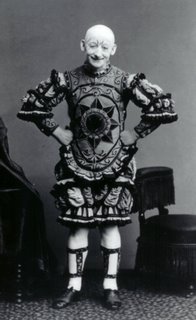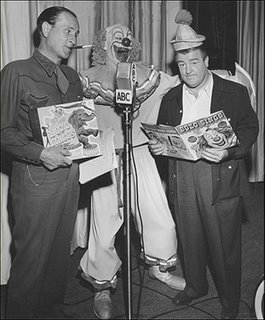 Grock
Grock Karl (Charles) Adrien Wettach
Born: January 10, 1880, Reconvilier, Switzerland
Died: July 14, 1959, Imperia, Italy
A Swiss auguste whose blunders with the piano and the violin made him the toast of European circus and stage and earned him the title "King of Clowns".
The son of a watchmaker, he became an amateur acrobat and was allowed to spend each summer with a circus, where he performed first as a tumbler and then as a violinist, pianist, and xylophonist. He became the partner of a clown named Brick (who had just split with a partner named Brock) and changed his name to Grock in 1903. Together they appeared in France, North Africa, and South America. When Brick married, Grock joined the celebrated clown Antonet (Umberto Guillaume). In Berlin, appearing on a stage instead of in the ring, they failed at first; but, by mastering stage technique, they obtained a London engagement in 1911.
Two years later Grock had honed and perfected the character of a simpleton among musical instruments that created a sensation with European audiences. The talented musician, who could play 24 instruments and speak many languages, became the "King of Clowns" in the early 1900s and performed for many of Europe's crowned heads. He also started a successful music publishing business for his popular songs. In 1924 he left England and remained on the European continent until his farewell performance at age 74 in Hamburg, Germany, on October 30, 1954.
Grock only appeared for one brief series of shows in the United States. His performances were neither as well received nor as well reviewed as he'd expected and he never returned.
Grock wrote several books, among them his autobiography, Die Memoiren des Königs der Clowns (1956; Grock, King of Clowns), and Life's a Lark. Several of his performances have been preserved on film.
The highest-paid artist at one time in Europe, was broke after buying a circus tent for his variety show after World War II, but recovered financially through successful tours. He retired to the villa he had built in the 1920s on the Riviera.
~ Edited from Grock's Wikipedia entry










